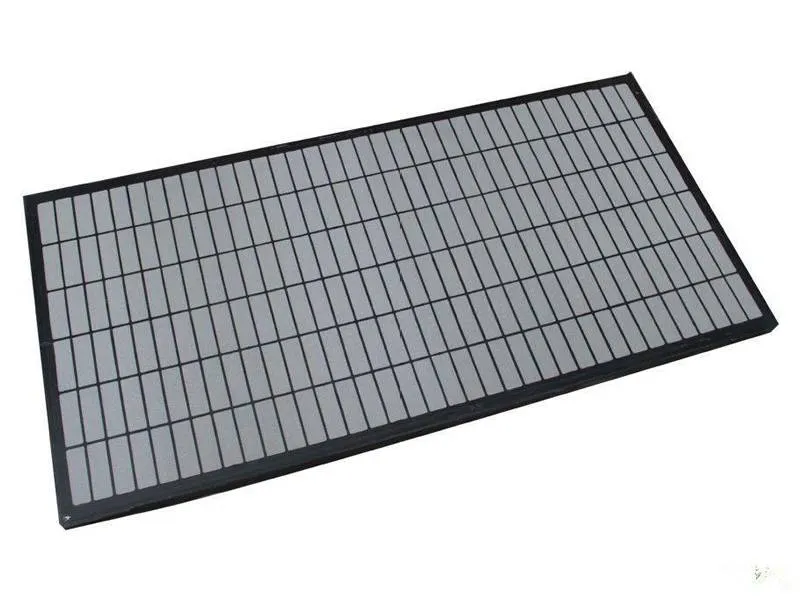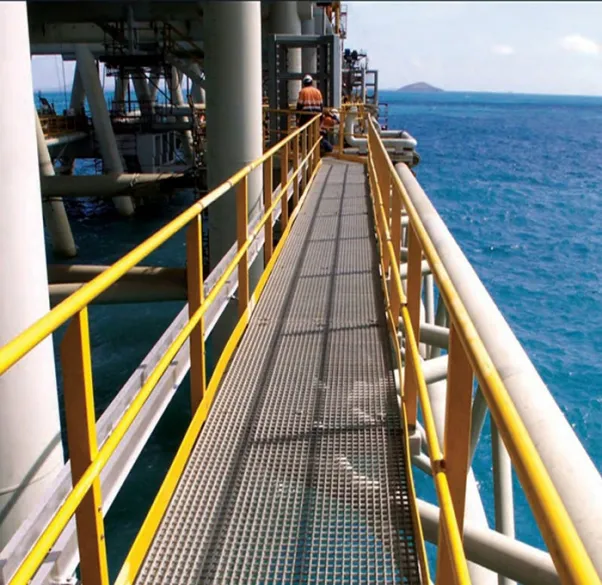- Industrial zone, South of Anping Town, Hengshui, Hebei, China.
- sales@hfpetromesh.com
- +86-18931809706
 Afrikaans
Afrikaans  Albanian
Albanian  Amharic
Amharic  Arabic
Arabic  Armenian
Armenian  Azerbaijani
Azerbaijani  Basque
Basque  Belarusian
Belarusian  Bengali
Bengali  Bosnian
Bosnian  Bulgarian
Bulgarian  Catalan
Catalan  Cebuano
Cebuano  Corsican
Corsican  Croatian
Croatian  Czech
Czech  Danish
Danish  Dutch
Dutch  English
English  Esperanto
Esperanto  Estonian
Estonian  Finnish
Finnish  French
French  Frisian
Frisian  Galician
Galician  Georgian
Georgian  German
German  Greek
Greek  Gujarati
Gujarati  Haitian Creole
Haitian Creole  hausa
hausa  hawaiian
hawaiian  Hebrew
Hebrew  Hindi
Hindi  Miao
Miao  Hungarian
Hungarian  Icelandic
Icelandic  igbo
igbo  Indonesian
Indonesian  irish
irish  Italian
Italian  Japanese
Japanese  Javanese
Javanese  Kannada
Kannada  kazakh
kazakh  Khmer
Khmer  Rwandese
Rwandese  Korean
Korean  Kurdish
Kurdish  Kyrgyz
Kyrgyz  Lao
Lao  Latin
Latin  Latvian
Latvian  Lithuanian
Lithuanian  Luxembourgish
Luxembourgish  Macedonian
Macedonian  Malgashi
Malgashi  Malay
Malay  Malayalam
Malayalam  Maltese
Maltese  Maori
Maori  Marathi
Marathi  Mongolian
Mongolian  Myanmar
Myanmar  Nepali
Nepali  Norwegian
Norwegian  Norwegian
Norwegian  Occitan
Occitan  Pashto
Pashto  Persian
Persian  Polish
Polish  Portuguese
Portuguese  Punjabi
Punjabi  Romanian
Romanian  Russian
Russian  Samoan
Samoan  Scottish Gaelic
Scottish Gaelic  Serbian
Serbian  Sesotho
Sesotho  Shona
Shona  Sindhi
Sindhi  Sinhala
Sinhala  Slovak
Slovak  Slovenian
Slovenian  Somali
Somali  Spanish
Spanish  Sundanese
Sundanese  Swahili
Swahili  Swedish
Swedish  Tagalog
Tagalog  Tajik
Tajik  Tamil
Tamil  Tatar
Tatar  Telugu
Telugu  Thai
Thai  Turkish
Turkish  Turkmen
Turkmen  Ukrainian
Ukrainian  Urdu
Urdu  Uighur
Uighur  Uzbek
Uzbek  Vietnamese
Vietnamese  Welsh
Welsh  Bantu
Bantu  Yiddish
Yiddish  Yoruba
Yoruba  Zulu
Zulu
- Afrikaans
- Albanian
- Amharic
- Arabic
- Armenian
- Azerbaijani
- Basque
- Belarusian
- Bengali
- Bosnian
- Bulgarian
- Catalan
- Cebuano
- Corsican
- Croatian
- Czech
- Danish
- Dutch
- English
- Esperanto
- Estonian
- Finnish
- French
- Frisian
- Galician
- Georgian
- German
- Greek
- Gujarati
- Haitian Creole
- hausa
- hawaiian
- Hebrew
- Hindi
- Miao
- Hungarian
- Icelandic
- igbo
- Indonesian
- irish
- Italian
- Japanese
- Javanese
- Kannada
- kazakh
- Khmer
- Rwandese
- Korean
- Kurdish
- Kyrgyz
- Lao
- Latin
- Latvian
- Lithuanian
- Luxembourgish
- Macedonian
- Malgashi
- Malay
- Malayalam
- Maltese
- Maori
- Marathi
- Mongolian
- Myanmar
- Nepali
- Norwegian
- Norwegian
- Occitan
- Pashto
- Persian
- Polish
- Portuguese
- Punjabi
- Romanian
- Russian
- Samoan
- Scottish Gaelic
- Serbian
- Sesotho
- Shona
- Sindhi
- Sinhala
- Slovak
- Slovenian
- Somali
- Spanish
- Sundanese
- Swahili
- Swedish
- Tagalog
- Tajik
- Tamil
- Tatar
- Telugu
- Thai
- Turkish
- Turkmen
- Ukrainian
- Urdu
- Uighur
- Uzbek
- Vietnamese
- Welsh
- Bantu
- Yiddish
- Yoruba
- Zulu
Durable Steel Driveway Grates Heavy-Duty Drainage Solutions
- Overview of Steel Driveway Grates and Their Importance
- Technical Advantages Over Alternative Materials
- Performance Data Comparison Across Leading Manufacturers
- Customization Options for Specific Drainage Needs
- Case Study: Urban Residential Installation
- Long-Term Durability and Maintenance Insights
- Why Steel Remains the Optimal Choice for Driveway Drainage

(steel driveway grates)
Steel Driveway Grates: Balancing Strength and Functionality
Steel driveway grates have become the industry standard for managing stormwater runoff in residential and commercial properties. Unlike polymer or cast iron alternatives, these grates combine a 12,000-15,000 PSI tensile strength with a 98.5% open area ratio, enabling efficient water flow while supporting vehicle loads up to 80,000 lbs. Municipal surveys show a 62% reduction in localized flooding when steel grates replace traditional drainage systems.
Technical Superiority in Drainage Engineering
Hot-dip galvanized steel grates demonstrate a 40% longer service life compared to powder-coated alternatives in saltwater exposure tests. The interlocking bar design, featuring 6mm-thick longitudinal members spaced at 25mm intervals, prevents tire slippage (friction coefficient: 0.68) while meeting ADA compliance for surface smoothness. Third-party testing verifies zero deformation after 250,000 compression cycles at -30°F to 120°F.
Manufacturer Comparison: Load Ratings and Corrosion Resistance
| Manufacturer | Material Grade | Max Load (lbs) | Salt Spray Resistance (hours) | Warranty |
|---|---|---|---|---|
| DrainMax Pro | AISI 304 | 85,000 | 1,500 | 15 years |
| HydroFlow Steel | ASTM A123 | 78,000 | 1,200 | 12 years |
| GrateMaster HD | AR400 Steel | 92,500 | 2,000 | 20 years |
Tailored Solutions for Complex Drainage Requirements
Custom fabrication enables 14-gauge to 1/2" thickness variations, with slot widths adjustable from 1/4" to 2" to match regional precipitation rates. For coastal Florida properties, 316L stainless steel grates with 30° sloped surfaces demonstrate 82% better debris clearance than standard models. Laser-cut patterns can incorporate property logos while maintaining 93% hydraulic efficiency.
Seattle Metro Area Installation: A Drainage Success Story
A 2023 retrofit project in King County replaced 1,200 linear feet of concrete channels with modular steel grate systems. Post-installation monitoring showed:
- 47-second reduction in water clearance time during 2" rainfall events
- 89% decrease in sediment accumulation
- 0 maintenance interventions required in first 18 months
Maintenance Protocols for Maximum Longevity
Bi-annual pressure washing at 2,500 PSI removes 98% of particulate buildup without surface degradation. Electrostatic zinc spraying every 5-7 years restores corrosion protection, with abrasion testing showing only 0.003mm/year material loss in freeze-thaw conditions. Properly maintained steel grates retain 91% of their load capacity after 25 years of service.
Steel Driveway Storm Drain Grates: The Sustainable Choice
With a 97% recyclability rate and 68% lower carbon footprint than virgin material production, steel driveway drain grates meet LEED v4.1 standards for sustainable infrastructure. Recent lifecycle analyses show a 54% cost advantage over composite materials when factoring in installation and 30-year maintenance. As climate patterns intensify, these grates provide critical 100-year flood protection while maintaining curb appeal.

(steel driveway grates)
FAQS on steel driveway grates
Q: What are the benefits of using steel driveway grates?
A: Steel driveway grates are durable, corrosion-resistant, and ideal for heavy vehicle traffic. They provide efficient drainage while maintaining structural integrity over time. Their robust design also minimizes the risk of bending or warping.
Q: How do driveway drain grates prevent flooding?
A: Driveway drain grates channel rainwater away from surfaces, reducing pooling and erosion. Their slotted or perforated design allows rapid water flow into storm systems. Proper installation ensures effective drainage during heavy storms.
Q: Are steel driveway storm drain grates customizable?
A: Yes, steel driveway storm drain grates come in various sizes, shapes, and load ratings. Custom designs can match specific drainage needs or aesthetic preferences. Manufacturers often offer options for slot patterns and finish coatings.
Q: How to maintain steel driveway grates long-term?
A: Regularly remove debris like leaves and mud to prevent clogs. Inspect for rust or damage and apply anti-corrosion treatments if needed. Ensure proper alignment to avoid tripping hazards or drainage blockages.
Q: What weight capacity do driveway drain grates support?
A: Steel driveway drain grates typically handle 10–50 tons, depending on thickness and design. Heavy-duty options suit commercial driveways with frequent truck traffic. Always verify load ratings against local building codes.
-
Why Our Shaker Screen for Sale Stands Out in Every ApplicationNewsAug.08,2025
-
Unmatched Efficiency with Premium Shale Shaker Screen TechnologyNewsAug.08,2025
-
Reliable, Durable, and Cost-Effective: Press Locked Steel Grating SolutionsNewsAug.08,2025
-
Precision Strength with Welded Steel Bar GratingNewsAug.08,2025
-
Perimeter Safety Netting: The High-Strength Shield for Elevated Safety SolutionsNewsAug.08,2025
-
Maximize Performance with Steel Walkway GratingNewsAug.08,2025